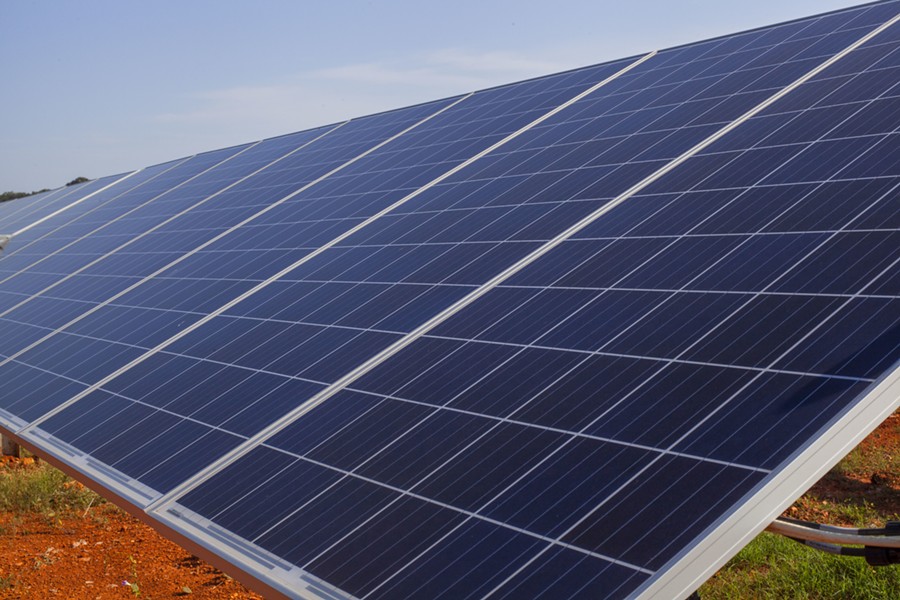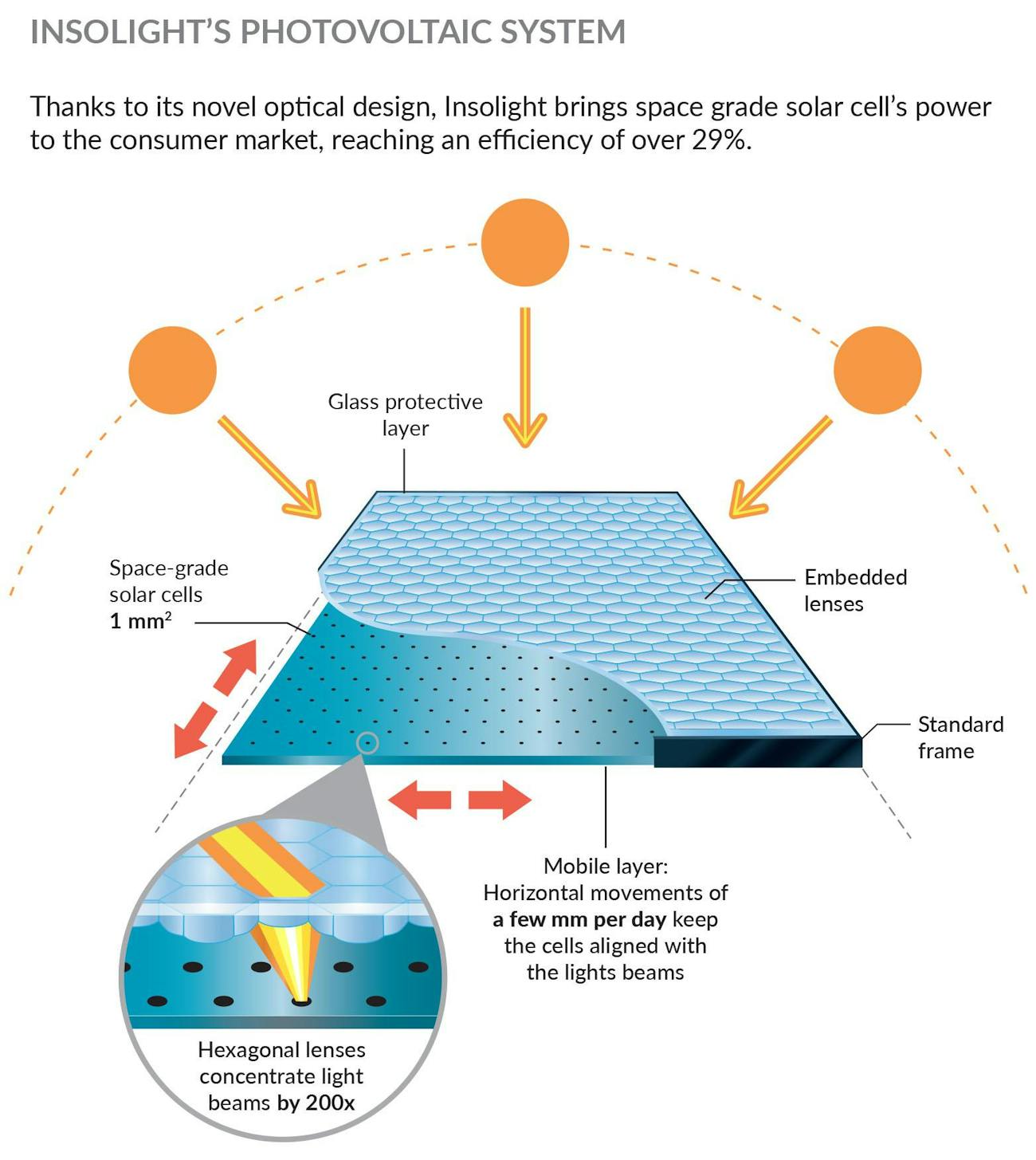Groundbreaking Solar Panels Use Space Tech to Double Efficiency

A new solar technology promises to offer double the efficiency of conventional residential panels, by using an optical system to concentrate the light on tiny cells typically reserved for space satellites. Insolight, a new solar startup founded by three former students from Switzerland’s École Polytechnique fédérale de Lausanne, claims its panels can offer yields of up to 29 percent. By comparison, many panels on the market offer yields around 17 to 19 percent.
It’s the latest in a line of big movements from the solar industry, which has seen a number of innovative launches amid lowering costs. The startup, which outlined its technology to its former university on Tuesday, decided to use highly efficient cells normally used to power satellites. These cells are incredibly expensive, so to keep costs down the team developed a layer of optical lenses, held in place with a frame and covered by protective glass, that focuses the light onto the cells by a factor of 100. That means the cells themselves, which measure one square millimeter each, only take up around half a percent of the surface area of the panel.

Horizontal movements ensure the lenses stay aligned by shifting a few millimeters per day. The team claims its technology can reduce overall energy bills by 30 percent in sunny regions.
The lens layer can also provide benefits for existing systems, focusing the light on regular panels to boost their yields. Mathieu Ackermann, CEO of Insolight, said in a statement that “this hybrid approach is particularly effective when it’s cloudy and the sunlight is less concentrated, since it can keep generating power even under diffuse light rays.”
The breakthrough comes at an exciting time for the solar industry, which has seen rapid growth in the United States. Around 929 megawatts were installed in the country in 2010, a figure that rose to 11 gigawatts in 2018. Installation prices have also dropped over that same period, from $6.65 per watt to $2.89.
A number of firms have seen the benefits of this renewed interest. Roberto Rodriguez Labastida, senior research analyst for Navigant, told Inverse in Decemberthat Tesla’s solar business, as well as Sunrun and Vivint Solar, all achieved profitability by the third quarter of 2018. This, Labastida said, is “perhaps the most important milestone that residential solar providers have achieved so far,” as “it gives them freedom to choose their future strategy instead of relying on the will of investors.”
This growing industry has resulted in a number of new innovations. Tesla’s solar roof, designed to look like a regular roof to the untrained eye, is expected to ramp up production later this year. Solgami, designed by Australian architect Ben Berwick, uses origami-like window blinds to bounce light into an apartment while generating energy. SolarWindow has also demonstrated solar-harvesting window panes that could benefit skyscrapers with limited roof space.
While the Insolight team initially reached yields of up to 36 percent, its latest design aimed at mass production brought the figure down by seven percentage points. The panels were tested for a year at an EPFL-owned site, where Ackermann said they “kept working without a hitch through heat waves, storms and winter weather.” The yield rates of the new panels were confirmed in tests held by the Institute of Solar Energy at the Technical University of Madrid.
Insolight is speaking to a number of panel manufacturers to bring the product to market, with a first launch expected in 2022.
It’s not the only groups that’s recognized the benefits of space-bound solar panels — Chinese researchers are exploring a solar farm in space that could beam energy down to Earth with six times greater intensity than panels on terra firma.
From: https://www.inverse.com/article/53424-solar-energy-these-panels-double-the-efficiency-using-space-tech

